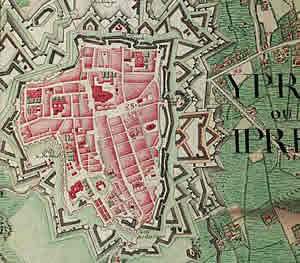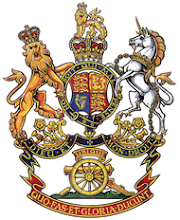The construction of St Martins Cathedral began in 1230, and was completed in 1370.
 |
| Ypres St Martins Cathedral Pre WW1 |
 |
| St Martins Cathedral Ypres WW1 Ruins |
Reconstruction of Pres began in 1920, the Cathedral being rebuilt and completed in 1930, with change to the shape of the spire.
| Ypres - St Martins Cathedral |
Under the wall of the organ in the north transept is a memorial to the British and British Empire Solders who died during the First World War. It is one of the 'cathedral tablets' which were placed by the Imperial War Graves Commission (now Commonwealth War Graves Commission) in cathedral towns throughout France and Belgium.
| Ypres St Martins CWGC Memorial Tablet |
A poem found in the papers of Brigadier General HM Hordon OBE MC and considered written by him recalls the newly restored organ and the memories of the conflict around Ypres.
YPRES CATHEDERAL
1930
THE ORGAN THROBS, ITS ECHOES DIE AWAY,
A SHAFT OF LIGHT, ROSE TINTED, MAKES A TRACK,
THAT DWELLS UPON AN ALTAR BREATHING PEACE
I SIT, AND IN MY REVERIE LOOK BACK……
THE WALLS DISOLVE, THE MOONLIGHT FILTERS THROUGH,
THE STARS ABOVE SHINE OUT IN FITFUL SKY,
THE ALTAR YAWNS, THE GRAVES AGAIN GAPE WIDE,
AND GHOSTLY VOICES BREATHE A MURMERED SIGH.
AS IN A DREAM I HEAR AGAIN THE SOUND,
OF TRANSPORT RATTLE OVER COBBLED STREET,
THE DISTANT DRUM THAT TELLS OF LURKING DEATH,
AND BEATING PULSE OF COUNTLESS MARCHING FEET.
A NEAR-BY GUN BOOMS OUT ITS WARNING NOTE,
I HEAR VENOMED ANSWER WHINNING BY,
THE EARTH AGAIN IS SHATTERED AND I HEAR
A WHINNY OF ALARM, AND THEN A CRY…..
THE ORGAN SWELLS, THE DARKNESS FADES AWAY,
I STRUGGLE TO THE PRESENT FROM THE PAST,
THE HUM OF GHOSTLY VOICES INTERWINES
WITH CANDENCES THAT BREATHE OF PEACE AT LAST.
WHERE EVERY STONE IS SANCTIFIED BY DEAD
A BREATH OF ENGLISH LANES, AND HOPES OF YOUTH.
I SIGH AND THEN IN SILENCE BOW MY HEAD.
| Ypres St Martins Knave |
| Ypres St Martins Side chapel |
| Ypres St Martins Side chapel |






























































